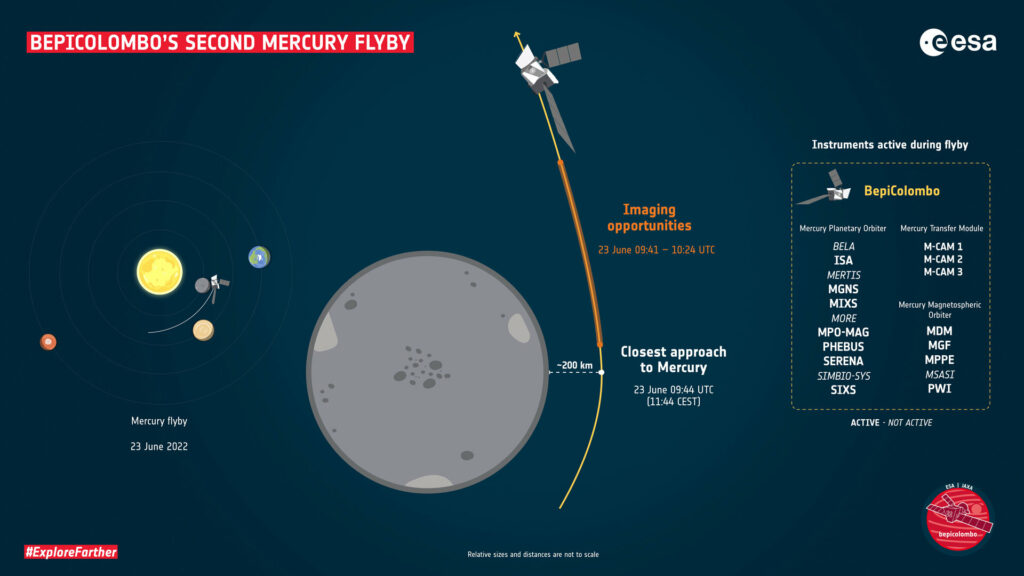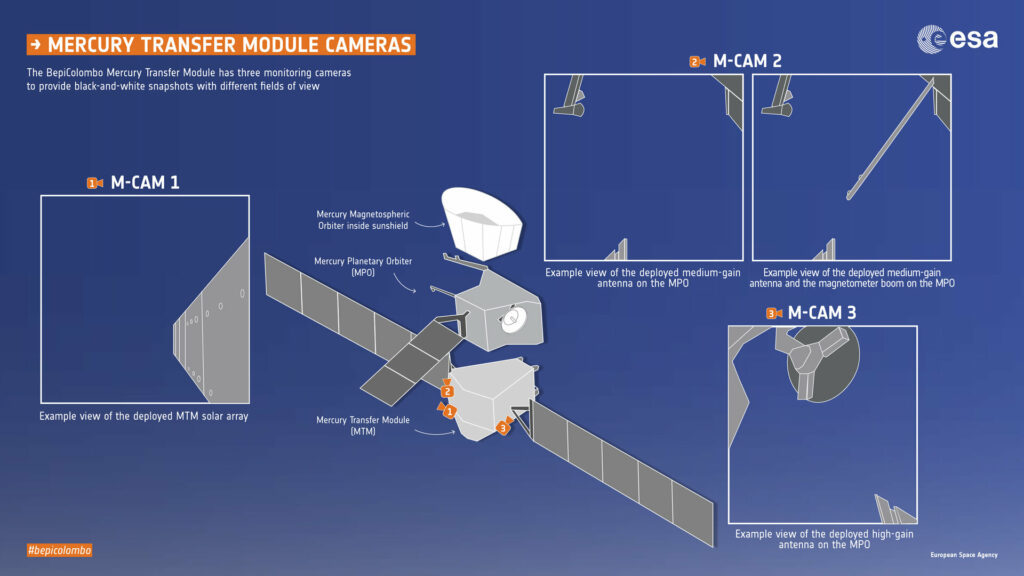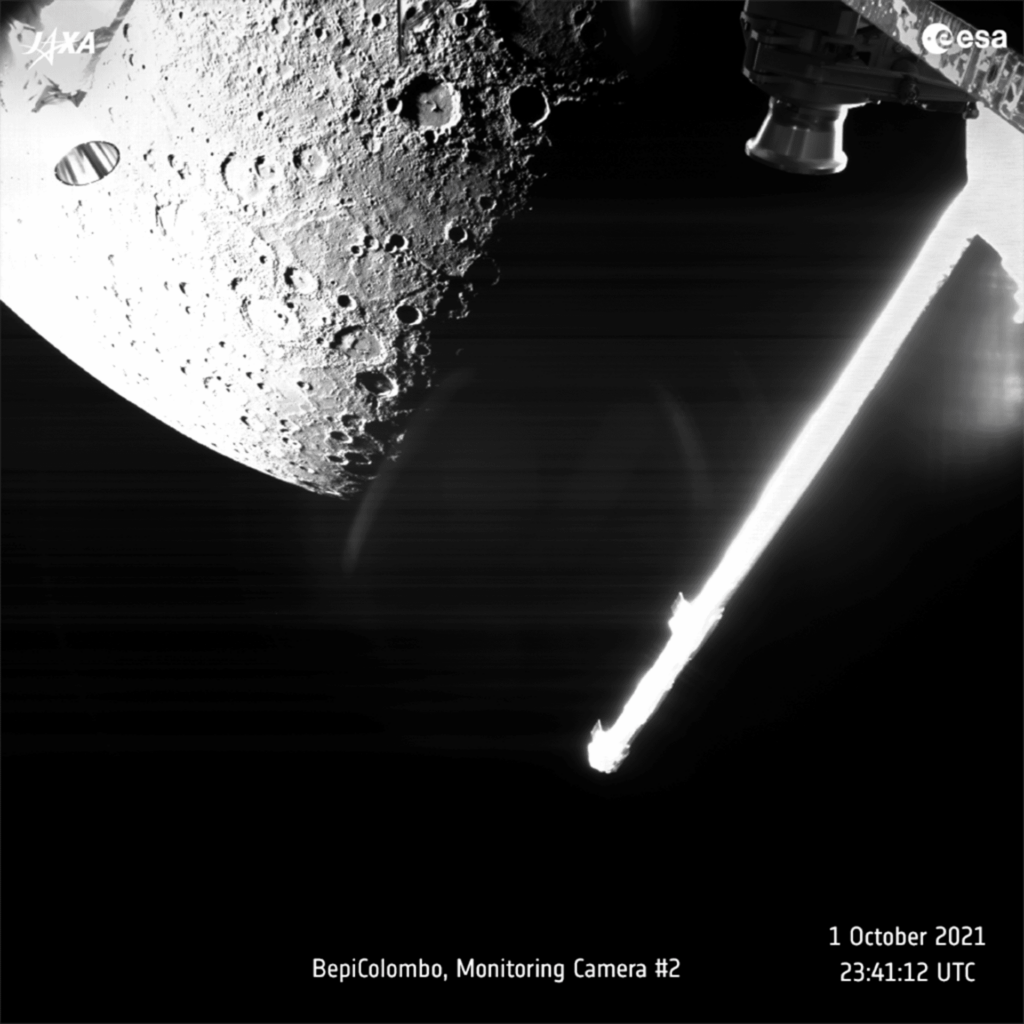On June 23, the European-Japanese BepiColombo mission will fly over Mercury for the second time. The probe will take advantage of the planet’s gravity to reduce its speed. In the future, this will allow it to enter a permanent orbit around Mercury.
On the way to Mercury
The BepiColombo device was launched in 2018. It consists of a European and a Japanese probe. After entering an orbit around Mercury, they will separate, after which they will begin to carry out their scientific programs.
To enter an orbit around Mercury, BepiColombo needs to extinguish its excess orbital velocity. Since this requires much more fuel than the device can take with it, engineers use gravity to slow it down. Since the launch, BepiColombo has already performed four maneuvers in the vicinity of Earth, Venus and Mercury. Now it has to take advantage of Mercury’s gravity again. This will allow BeliColombo to reduce its heliocentric speed by 1.3 km/s.
Photos of Mercury’s surface
On June 23, BepiColombo will fly at a distance of only 200 km from the cratered surface of Mercury. The minimum approach point will be passed at 09:44 a.m. Coordinated Universal Time. Since both probes are in cruise configuration and docked to each other, they can use only part of their instruments to study Mercury. Nevertheless, BepiColombo will measure magnetic fields, plasma and radio waves, as well as charged particles in the vicinity of the first planet from the Sun.

As for BepiColombo’s scientific cameras, they will be activated only after it enters a permanent orbit around Mercury. However, we will still be able to see the planet again thanks to three selfie cameras. They are installed on board the MTM flight module and are designed to monitor its condition.

BepiColombo selfie cameras can take 1024×1024 pixel black-and-white pictures. As the previous visit of the device to Mercury showed, this is enough to consider the largest structures on its surface. Since BepiColombo is approaching the planet from the night side, the first images of its illuminated hemisphere will be taken five minutes after passing the point of minimum approach from a distance of about 800 km.

It is expected that the first image of Mercury will be transmitted to Earth within a few hours after the flyby and published by ESA in the evening of June 23. The next photo release is scheduled for June 25. The full publication of all the pictures will take place on June 27.
In the future, BepiColombo will perform four more gravitational maneuvers near Mercury. They allow it to enter a permanent orbit around the planet on December 5, 2025.
According to https://www.esa.int
Follow us on Twitter to get the most interesting space news in time
https://twitter.com/ust_magazine

